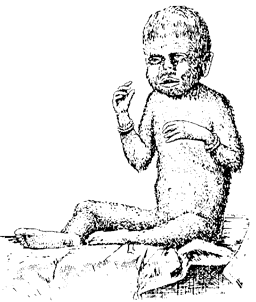 |
Science Frontiers ONLINE No. 62: Mar-Apr 1989 |
|
|
A HAIR-RAISING PHENOMENON
The Creation Research Society Quarterly often touches on subjects avoided by the establishment scientific journals. In the latest issue, a medical doctor reviews the hoary ontogeny-recapitulates-phylogeny hypothesis. As classically stated by evolutionists, the human embryo passes through stages in which it looks like creatures that preceded it in evolution. The doctor, G.R. Culp, remarks that although evolutionists maintain that reputable scientists no longer employ this argument as evidence for evolution, the "recapitulation" claim is still being made in some classrooms and even during some of the recent creationist-evolutionist debates.
 In some humans such as the "hairy child" sketched above, the lanugo or natal hair persists beyond the womb. Drawing from Incredible Life. |
"The embryo is covered with very fine hair at about the seventh month of development of the embryo. The evolutionist claims that this is evidence that men came from hairy mammals like the apes. However, these hairs are unlike the hair found on apes, as they are very small in diam eter and always soft and unpigmented. This hair disappears from the body soon after birth. It is called lanugo and is quite unlike the permanent hair that grows on the human body and head..."
To the anomalist, the battle between the evolutionists and creationists is secondary to the anomalies that keep cropping up without satisfactory explanations from either side. Here, we ask the purpose of the lanugo. Does it have to have a purpose? Just being there suggests purpose. Why does it disappear?
(Culp, G. Richard; "Embryology - Overlooked Facts You Should Know," Creation Research Society Quarterly, 25:100, 1988.)